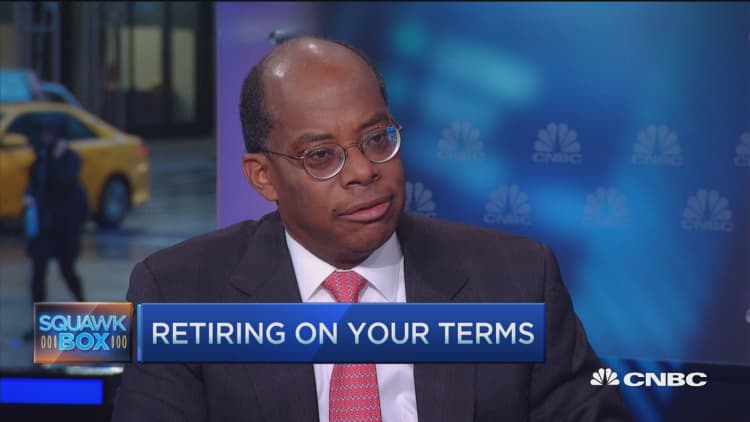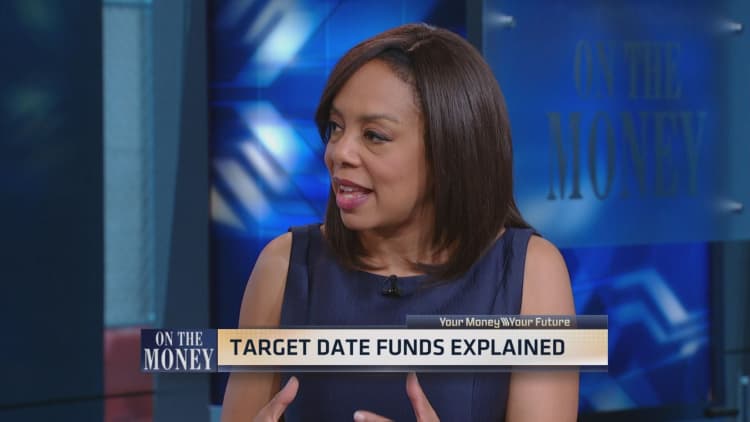


The Standard & Poor's 500 Index has returned more than 200 percent since March 2009, the start of what's now the second-longest bull run in history.
Yet retirement savers and mom-and-pop investors haven't seen such big gains. While 401(k) plan balances have bounced back since their lows seven years ago, most Americans still fall woefully short of the savings they'll need to last them through retirement.
Back in 2007, people in their 60s had average 401(k) balances of about $120,000. That figure plunged to about $90,000 in early 2009, and climbed back to more than $150,000 by the end of 2015, according to data from Fidelity. For most, that's still significantly short of the recommended account balance for people on the brink of retirement: Eight to ten times your final salary.
"Frankly, if you have only about $100,000, you aren't going to be able to retire," said Brooklyn, N.Y.-based financial planner Mark Sallinger. "While some expenses will wane, and you might no longer have kids or a mortgage to pay for, health and medical costs are going through the roof."
Indeed, although Americans of all ages have seen their retirement accounts recover since the financial crisis, average balances suggest even younger people are behind on reaching the recommended targets of one times salary by age 30 and three times salary by age 40.
Figures from other sources look even lower: The average account balance for 401(k) plans in 2009 was about $51,000 — compared to about $76,000 in 2014, according to Department of Labor data provided to CNBC by retirement plan research firm Brightscope.
Now, most retirement savers don't invest exclusively in the S&P (nor should they, necessarily) and fees and contribution levels are an important part of the story when it comes to paltry retirement savings. But it's clear that the downturn set savers back.
One problem is that many small investors tend to get fearful as stocks fall, and sell — locking in losses. And as gains return, missing just a couple good days of market performance can actually wipe out the majority of your returns.
"Some individual investors got spooked in 2008 and sold low," Sallinger said. "So not everyone has been able to partake in the bull market. For the investors who are dipping a toe back in now, it's late in the cycle."
Even those investors who got back into stocks relatively early in the bull run have trailed the index: The average investor in a U.S. equity fund saw annualized returns of about 9 percent over the last 5 years — a period during which the S&P 500 returned nearly 12 percent annualized, according to Morningstar data. Investors often lag the very funds they hold because of poorly-timed trading.
But the case that mom and pop missed out on the bull market shouldn't be overstated, said Sean Collins, senior director of industry and financial analysis at Investment Company Institute, which represents the fund industry.
"Money in 401(k)s and IRAs tends to be pretty steady coming in month in and month out," Collins said. "While there's no doubt that investors do respond to returns, that response tends to be pretty muted."
More significant has been the trend of investors moving toward global equity funds and domestic exchange traded fund, Collins said.
While certain companies have especially outperformed since the 2009 low — like consumer discretionary stocks, up more than 400 percent — the bull market has buoyed all sectors, said S&P Dow Jones Indices senior index analyst Howard Silverblatt.
Unfortunately, that means it's getting harder to find bargains, he said.
"Overall we have come back well," Silverblatt said, "but the market looks expensive whether you're looking at P/E or price to cash flow."



